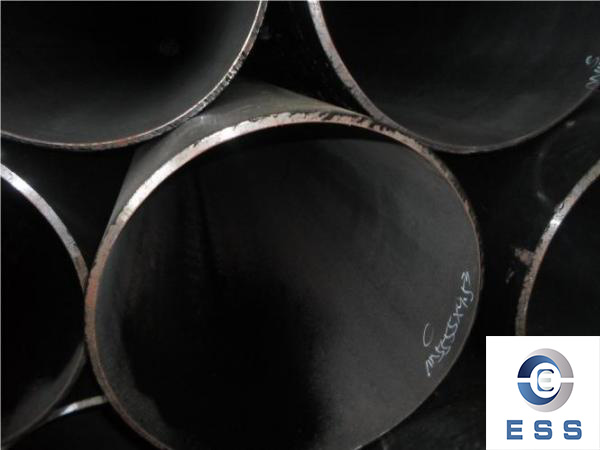ERW pipes are widely used in oil and gas, structural pipes, fluid
transportation, and machinery manufacturing due to their high efficiency,
stable weld quality, and cost advantages.
However, various defects may occur during
the production of ERW pipes due to factors such as raw materials, forming
processes, welding parameters, equipment conditions, cooling methods, and
operator skill levels.
These defects are generally classified as
follows:
Process Defects: Caused by unreasonable
production parameters, abnormal welding heat input, or improper
post-processing;
Weld Defects: The weld metal does not form
a complete, dense, and uniform structure according to standards;
Surface Defects: Caused by the quality of
the steel strip or mechanical damage.

ERW Pipe Process Defects
1. No Burrs
The weld has burrs. Generally, external
burrs are better in hydrostatic tests. However, weld cracking is more common in
bending and flattening tests.
2. Peach-Tip Shape
The weld has no burrs, but it is recessed
into the ERW pipe wall, forming a peach-tip shape, which does not seal during
hydrostatic tests. However, multiple cracks appeared in the weld after bending
and flattening tests.
3. Unilateral Burrs
Burrs on one side of the watertight weld
were tested under water pressure and side compression tests. Cracks sometimes
appeared during bending and flattening tests.
4. Ablation
Small pits appeared on the outer surface of
the weld. There was a lot of sparking during welding. Microscopic observation
revealed small pores. Watertightness was good after water pressure, bending,
and flattening tests, and most welds did not crack, but this affected the
strength and service life.
1. Opening
Melt marks or incomplete weld marks
appeared at the weld edge. Cracks extended along the weld direction in a
two-pointed shape, penetrating the inner surface after water pressure tests,
causing leakage.
2. Cracks
Microcracks; fine cracks were visible on
the outer surface, while the inner surface remained intact. No leakage was
observed after water pressure tests, but cracks appeared under pressure or cold
bending.
3. Lap Welding
Misalignment and scraping occur on both
sides during welding. Besides burrs, a noticeable protrusion on one side is
visible, and the deviation exceeds the wall thickness.
ERW Pipe Surface Defects
1. Scratches
Usually straight scratches along the axial
direction, exceeding the wall thickness in depth. Continuous nail-like
scratches on both sides of the weld are considered scrap defects. Deviation
exceeding the wall thickness is also a scrap defect.
2. Correction Damage
Smoothing spiral indentations significantly
exceeding the wall thickness are considered scrap defects.
3. Pitting
Small pits approximately 1mm in diameter
exist on the ERW pipe surface.
4. Warping
The ERW pipe surface is warped, causing the
part to separate from the metal substrate into fragments, discontinuously, and
peeling off—unacceptable phenomena.
ERW Pipe Defect Detection Methods
To ensure quality, large factories perform
the following tests:
1. Online Eddy Current Testing (ECT)
This can quickly identify surface cracks,
open welds, etc.
2. Ultrasonic Testing (UT)
Detects internal defects such as incomplete
penetration, inclusions, and lamellar defects.
3. Hydrostatic Test
Verifies the overall pressure resistance of
the ERW pipe.
4. Flattening/Bending Test
Tests weld toughness and metal plasticity.
5. Visual Inspection
Identifies scratches, burrs, dents, surface
ablation, etc.
How to Reduce ERW Pipe Defects
1. Select high-quality steel strip raw
materials (low inclusions, low segregation).
2. Precisely control the extrusion amount
and welding heat input.
3. Regularly maintain deburring tools and
forming equipment.
4. Adjust the chamfering and guiding system
to ensure steel strip alignment.
5. Monitor weld temperature and frequency
online.
6. Establish a strict quality tracking and
inspection mechanism.
Read more: ERW Pipe Specifications and Models













 Eastern Steel Manufacturing Co.,Ltd not only improve product production and sales services, but also provide additional value-added services. As long as you need, we can complete your specific needs together.
Eastern Steel Manufacturing Co.,Ltd not only improve product production and sales services, but also provide additional value-added services. As long as you need, we can complete your specific needs together.










